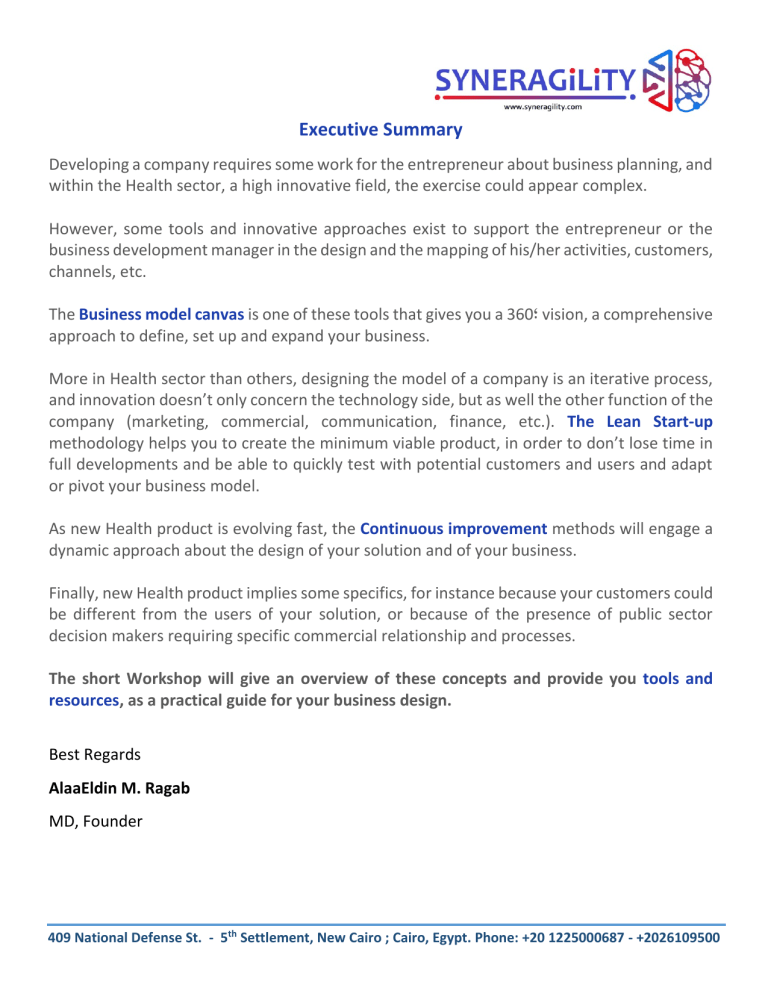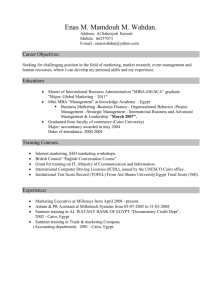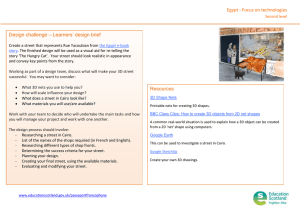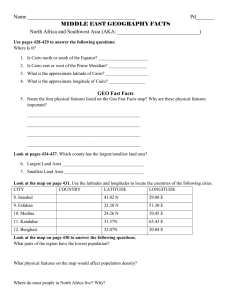
Executive Summary Developing a company requires some work for the entrepreneur about business planning, and within the Health sector, a high innovative field, the exercise could appear complex. However, some tools and innovative approaches exist to support the entrepreneur or the business development manager in the design and the mapping of his/her activities, customers, channels, etc. The Business model canvas is one of these tools that gives you a 360 ؛vision, a comprehensive approach to define, set up and expand your business. More in Health sector than others, designing the model of a company is an iterative process, and innovation doesn’t only concern the technology side, but as well the other function of the company (marketing, commercial, communication, finance, etc.). The Lean Start-up methodology helps you to create the minimum viable product, in order to don’t lose time in full developments and be able to quickly test with potential customers and users and adapt or pivot your business model. As new Health product is evolving fast, the Continuous improvement methods will engage a dynamic approach about the design of your solution and of your business. Finally, new Health product implies some specifics, for instance because your customers could be different from the users of your solution, or because of the presence of public sector decision makers requiring specific commercial relationship and processes. The short Workshop will give an overview of these concepts and provide you tools and resources, as a practical guide for your business design. Best Regards AlaaEldin M. Ragab MD, Founder 409 National Defense St. - 5th Settlement, New Cairo ; Cairo, Egypt. Phone: +20 1225000687 - +2026109500 Background and introduction There are many methods and approaches to supporting Startup businesses each with a powerful message aiming to support SMEs achieve their goals. The issue for The Health Startup business is that success becomes more challenging because of the context they are working in. There is a wide range of customers, including providers, commissioners and stakeholders who each need to be considered. Policy direction, regulation and standards can influence the market, and as such gaining access to that market can prove almost impossible without the application of the right considerations and processes. There are some key methods and approaches which can support you and this workshop will introduce you to three approaches, which each provide helpful resources The Health start-ups will benefit from, but will seek to encourage you to blend these approaches create your own toolkit and process to apply your creativity too. Who is the workshop for? This workshop is aimed at Health start-ups hoping to enter the health and social care market with their product or service. This workshop aims to provide Health start-ups with a “foundation” for the future providing you with the skills and processes that kick-start your The Health businesses. With this knowledge, you will be able to rapidly improve your products and gain more market share and success! How to use the workshop and outcome This workshop will review the BMC approaches, which individually are able to support business success, but which when properly understood and applied together effectively, will provide a far more comprehensive approach to entry and success into the Health market. Each of the approaches will be discussed individually to offer an outline structure and a fundamental level of understanding, along with links to tools, literature and case studies for further detail and references to help you consider and apply these methods to help achieve best success to your Health start-up. 409 National Defense St. - 5th Settlement, New Cairo ; Cairo, Egypt. Phone: +20 1225000687 - +2026109500 Why using the Business Model Canvas? A Business model is a complex concept referring to the complete design of the activities of a company, take in account the “global picture”, and defining all the parameters and characteristics of the company and its relations with its environment. The Business Model Canvas is a tool gathering all components of the strategy and the operations, and helping the manager/CEO to plan his/her business. Business model canvas components • Key partners: define your own ecosystem of innovation & business; who are your partners? Your suppliers? What are the key elements they produce that you need? What are their/your motivation in the partnership (money, visibility, access to other stakeholders, optimization, risk-sharing…)? • Key activities: define the activities your company will develop in order to be able to present products/services and associated added-value to your customers? (production, integration, R&D…) • Key resources: define the requested resources needed in order to develop your business. It could be financial, human, physical resources & materials, knowledge (IP, patents, know-how)… These resources could distinguish you from competitors. • Value Propositions: define the value you propose to your customers, which customer’s problem(s) do you propose to solve? Which customers’ needs do you satisfy? Each customer segment could have different problems and then your value proposition should be adapted to each category. A specific marketing and specific messages should be designed around each value proposition. Warning: in health sector, the value proposition could be related to the customer or to the end-user of the solution, which could be distinct (customers of your customer). • Customer relationships: define the type of relationship you have (or must have) with each customer segment. Apart of a simple contract, it could implies additional services (assistance), it could require specific complements from your part. In Health sector, outcomes based business model are emerging (see below) and it modifies deeply the relation between provider and customer, as it pushes to act as “associates” sharing the risk related to the implementation of the solution (see more below) . • Channels: define the best way(s) to reach your customer segments; how do you manage the communication/marketing? The distribution of your solution(s)? What are the channels most performing? 409 National Defense St. - 5th Settlement, New Cairo ; Cairo, Egypt. Phone: +20 1225000687 - +2026109500 • Customer segments: define the categories of customers you’re targeting, with characteristics and specificities; for whom is the The Health service creating value? (See example next slide) • Cost structure: define the costs implied by your business model; what are the costs of your activities, partners or suppliers, your own resources? The distribution channels • you will use? The marketing strategy? • Revenue streams: define the value your customers are really willing to pay. Each customer segment generates potentially different revenues and participate at different • level to the global business (prioritization of customers). Define the way as well how your customers pay you. The Syneragility’s project delivers four high-impact services to Health SMEs and entrepreneurs in order to boost their growth and move them to the next level of competitiveness. Each life transforming service has been designed to provide cross border value to a different target group of companies. It will do by offering training, mentoring, market intelligence, support and, above all, quality contacts. These services are: • Get on track Targets early-stage companies, start-ups and entrepreneurs. It supports them to optimize their business model and commercialization strategy. • Get funded Designed for SMEs looking for a second round of funding. It provides training, resources and networking opportunities with investors at regional level. • Get global Helps mature SMEs to access international markets by putting them in contact with foreign commercialization partners and potential customers. • Get inspired Identifies and disseminates unmet needs in The Health that can become business opportunities for investors. 409 National Defense St. - 5th Settlement, New Cairo ; Cairo, Egypt. Phone: +20 1225000687 - +2026109500



